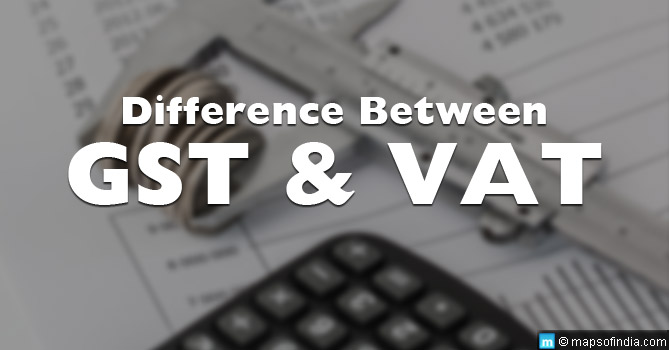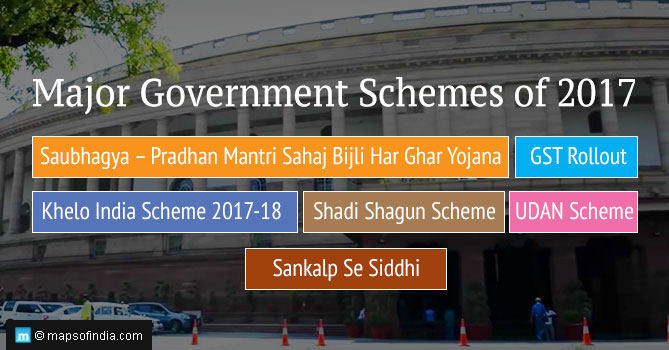After about 17 years in the planning stage and after months of deliberation and negotiation with state governments the NDA led central government finally implemented the Goods and Services Tax (GST) on 1 July, 2017. Many hailed it as the greatest tax reform of independent India.
The GST is a consolidated tax that replaces the various taxes previously charged on various goods and services. The VAT (Value Added Tax), service tax, entertainment tax, central excise duty etc. have been replaced by one single GST. The GST is a graded tax and various goods and services are covered by the various tax slabs.
GST Vs VAT
To understand GST better, let us take a look at how it differs from the Value Added Tax (VAT).
VAT or Value Added Tax was introduced on 1 April, 2005. It replaced the Sales Tax that had been in practice. It was implemented across the country except in Andaman and Nicobar Islands. All tax revenue earned by imposing the VAT on goods and services was deemed the income of the state government. Different states, thus, imposed different VAT rates and had different VAT regulations for the tax payer to comply with. The major issue with the implementation of the VAT was that cascading effect came into play. This means that every stage in the supply chain, the buyer had to pay tax on the amount which includes the tax paid by the previous buyer.
Now, with the implementation of the GST, good or service will be taxed in different tiers in a way that the tax burden is significantly lower on any single buyer. The tax paid depends on the slab the product is in and this varies with each level of production. Another very important feature of the GST is that the tax charged on every product or service is broken up into CGST and SGST. The CGST or the central GST is revenue that goes to the central government and the SGST or the state GST goes to the state. This allows for equitable distribution of the tax revenue.
Roadblocks in Implementation of GST
The GST brings in unprecedented efficiency, accountability, and relieves the payer’s tax burden significantly. Despite this the centre had faced much opposition from the states in coming to a consensus. The tax reform has also faced numerous criticisms for encouraging the “kaccha bill” system which retailers may prefer to becoming GST compliant. This is a possibility in the short run. In the long term, however, GST will increase accountability with growing awareness among the people and the trading community. One of the greatest criticisms that the GST has faced is with regard to the tax slabs. Items such as handlooms, women’s hygiene items etc. should be placed in lower tax slabs, critics feel. With time, the GST council will need to review the tax on these items.
Long term Advantages of GST Implementation –
- GST rollout will bring a uniform tax policy across the length and breadth o the country allowing India to function as one single market. The same goods and services procured in any state will attract the same rate of tax.
- GST rollout will eliminate the complications in the tax structure particularly in the case of inter-state manufacturing/production and sales. Previously, if a manufacturer were to sell products to a wholesaler or retailer in a different state, the transaction would be subject to Central Sales Tax (CST) and other taxes imposed by the state governments (LBT). This means that the manufacturer would need to comply with the taxation system in both the states. This will no be necessary with GST implementation.
- The transportation of goods across states created another challenge. About 40 percent of the time taken for the transport of goods was spent in clearances at state border check posts. Middlemen took advantage of this and corruption was rampant. GST eliminates all these illegal practices and allows for one single compliance mechanism and quicker delivery time.
- The benefits of GST implementation will translate into reduced tax burden on the tax payer since it does away will all other indirect taxes.
- GST implementation will reduce the import and export duties previously borne by the tax payer.
- Over half the items in the CPI basket have been placed in the zero tax slab. This means basics such as food, cereals, and vegetables will not be taxed. As we move up from basics to essentials to luxury and on to sin items the tax slab increases. This makes all basics of life affordable to the lower and middle income groups.
Read More About GST
What is GST?
How to register for GST?
Various Goods and Services Tax forms
Implementation of the GST in India
Costlier Or Cheaper Under GST?
Revised GST Rate List
Different GST Return Forms






